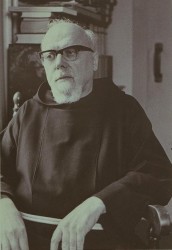
Gerlach 1978b
“Jeroen Bosch – Het Tafelblad te Madrid (2)” (P. Gerlach O.F.M. Cap.) 1978
[in: Brabantia, 27 (1978), nr. 2, pp. 65-73]
[Reprinted in Gerlach 1988: 133-141]
[Also mentioned in Gibson 1983: 118 (E262)]
Gerlach agrees with Van Puyvelde: Bosch can be understood without all the scholarly pedantry he is approached with today. He then offers an iconographical analysis of the Eye of Christ and of the representations of Ira and Superbia. Gerlach thinks it is far-fetched to see the rays of the Eye as an allusion to Christ as a Sun (Tolnay) and he calls the suggestion of Benesch and Gibson that the tondo (with the seven deadly sins) in the centre of the panel is a mirror presented to the viewer irrelevant. In the Ira segment the man dressed in brown could be a monk. Gerlach continuously refers to affinities between what Bosch painted and late medieval iconography and (devotional) literature. The meaning of the Tabletop as a whole is: Christ who is showing His wounds and thus begs His Father, Whose All-seeing Eye observes the sins of mankind, for mercy. However, God the Father has not been represented and the Eyes of Christ are a well-known late medieval topos (compare De Bruyn 1991: 12-13).
[explicit 21st March 2016]